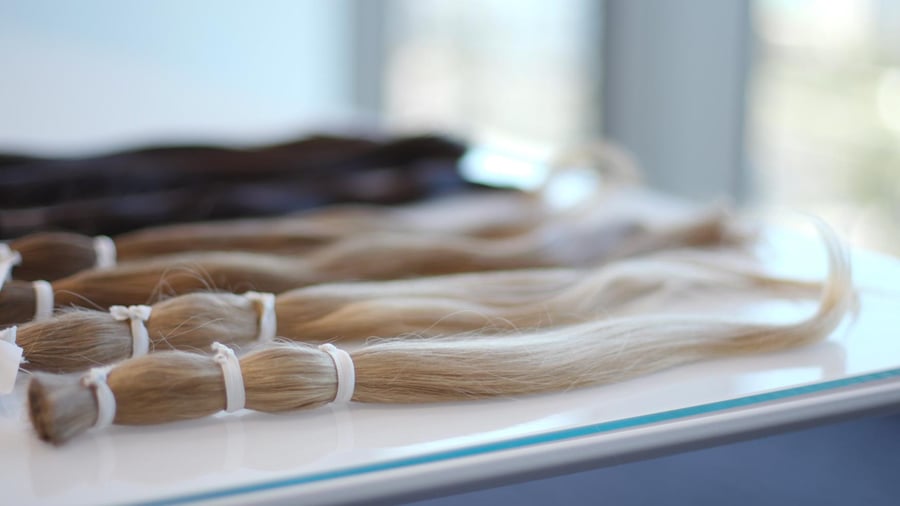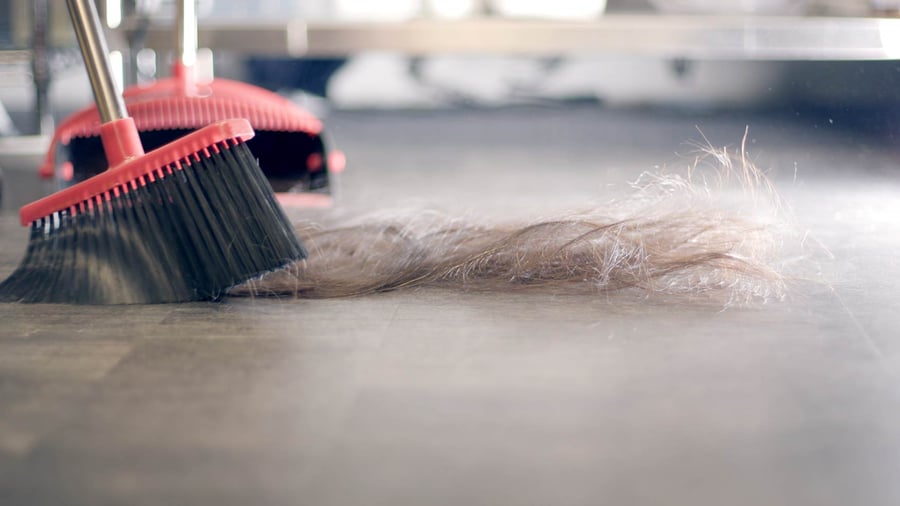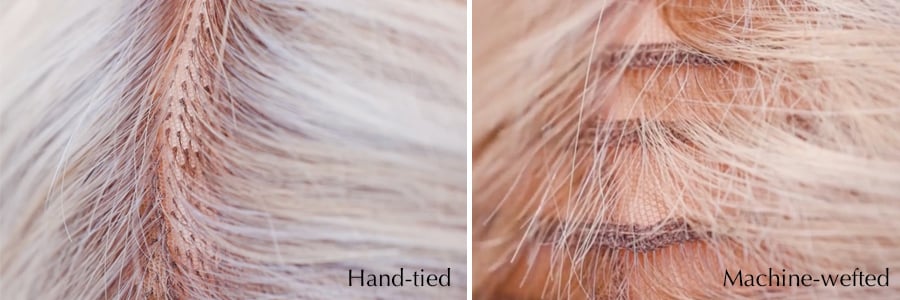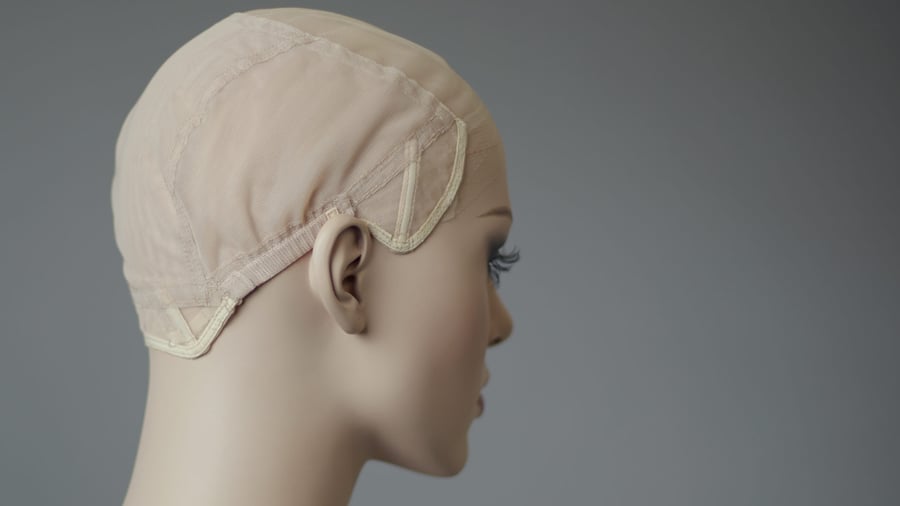What Drives the Cost of a Human Hair Wig Up and Down?

If you’ve been researching human hair wigs for hair loss, you have likely noticed they come with a wide range of price tags. Human hair wigs can start at as little as $100, run up into the thousands, and cost anything in between.
You may be asking yourself whether you should grab a bargain and buy a human hair wig at a lower price, or even whether you’d be getting overcharged by spending more. After all, aren’t all human hair wigs the same?
At Daniel Alain, we have more than two decades of experience making beautiful, human hair wigs, and we can tell you most assuredly that no, not all human hair wigs are the same.
We are passionate about making the most realistic and natural-looking wigs in the world and our collection is unrivaled, but we also understand that choosing a wig is a very intimate and personal experience. We feel it’s important that you are able to make informed and educated decisions in order to find just the right wig for you.
In this article we are going to discuss the factors that drive the cost of human hair wigs up and down, and why. You’ll learn what to look for when choosing a human hair wig, and how to ensure you get the quality, comfort, and longevity you’re seeking.
It’s worth repeating; not all human hair wigs are created equal. We are going to discuss the five main factors that determine the cost of a human hair wig. They are:
1). Hair Type
2). Hair Length
3). Craftsmanship
4). Material Quality
5). Cap Construction
What are the Different Hair Types used in Human Hair Wigs?
Have you ever wondered where the hair comes from in human hair wigs and how it is collected? Hair type is an important, cost-driving factor, because not all collected hair is of the same caliber, and will produce wigs of varying quality. Human hair wigs are typically made from either European, Chinese or Indian hair. While all of these hair types are equally beautiful in their natural form, the availability, collection methods, and processing practices vary greatly, resulting in very different hair quality for wig manufacturing.
Hair Type

Human hair grows directly from the scalp in one singular direction and the very best human hair wigs will mimic this movement and flow. Hair cut directly from the ponytail is called Remy hair. Remy hair is kept in bundles to ensure each strand is laying flat and that all the cuticles are going in the same direction. When the hairs are aligned in the direction of natural growth, the resulting wigs are smooth, silky soft, and free of mats and tangles. This kind of hair requires minimal processing which helps preserve the integrity of each strand and wigs made from Remy hair aren’t over-processed or mass-produced which allows the natural beauty of the hair to shine through.

Non-Remy hair is hair collected from fallen hair found in sinks or showers, pulled from hair brushes, or swept up from the floor. This is known as 'floor hair'. This collection process means that the cuticle direction varies from strand to strand, and without care and attention, resulting wigs are prone to matting and tangling with potential shedding problems. Floor hair requires substantial processing with chemical treatments, often destroying the natural qualities of the hair. The hair can become weak and brittle before it even becomes a wig.
Remy hair wigs are at a much higher price point because of the superior quality of the hair, the direct collection method, and less-processed production practices.
Wigs made from floor hair are sold at a much lower price point because of the hair’s availability, lower quality, and manufacturing process. It’s simply more affordable and widely available.
Hair Availability and Ethnicity
European hair comes from Caucasian women, primarily from Russia and Ukraine. In the 90s and early 2000s, many Eastern European women sold their hair - a practice that has since died out. Wig manufacturers at the time were able to stockpile large amounts of European hair and it’s virtually impossible to source this precious commodity today. Because of its rarity, European hair for wigs is highly sought-after and extremely expensive.
By contrast, Chinese and Indian hair is much more readily available these days. Many women sell their hair, just as Eastern European women used to do, or make religious offerings to temples and shave their heads as an act of devotion. The temples sell the offered hair to manufacturers for processing and exportation around the world. The majority of human hair wigs are made using Chinese and Indian hair, making them cheaper and more easily sourced.
Now we’ve talked about where human hair usually comes from, let’s discuss the unique characteristics of each hair type.
European hair is the smoothest and softest hair available making it highly desirable for wigs. With a silky texture and natural look, wigs made from European hair have a natural movement and shine.
Indian hair is more textured and has a natural body and movement and the resulting wigs are dense but bouncy, and easy to style.
Chinese hair is the most commonly used hair type across the industry. Chinese hair is straight, silky, and strong. Each strand is thicker than European or Indian hair, making it coarser to the touch. Wigs made from Chinese hair can hold more volume and style due to the nature of the hair.
How Does Hair Length Impact the Cost of Human Hair Wigs?

Hair length is another determining factor when pricing human hair wigs. Long hair takes time to grow and is, therefore, more desirable and takes more time to collect. Short hair is faster to grow, quicker to collect, and more commonly used for human hair wigs.
How is a Wig Cap Made?
Though it may not be the first thing you think of when choosing a wig, the cap is one of the most important elements to consider. A well-made, good-fitting cap can be the difference between falling in love with your new hair and not. The construction of the cap will determine not only how the wig feels on your head, but also whether or not the hair moves with a natural flow and feel. The cap is a vital element to a wig and the difference in materials and construction methods will impact cost.
Let’s get technical for a second. Human hair wigs are made using two different techniques: machine-wefting and hand-tying.

Machine-wefting is the process of machine-sewing the hair into strips, then sewing the strips onto the cap. Though fast to make and durable, machine-wefting can make a wig feel bulky and heavy. The hair in machine-wefted pieces lays flat so it’s a great option if you're used to wearing your hair down, but not so convenient if you want a piece you can tie up in ponytails or messy buns.
Hand-tying is the process of tying the hair to the cap of the wig and knotting it to keep it in place. Some hand-tied wigs are made by knotting 5-8 strands at a time, but the very best human hair wigs are made by knotting 1-2 individual strands at a time. Hand-tying is a slow, meticulous, and labor-intensive process that requires skilled artisans to produce a very natural-looking wig that mimics the movement and flow of a real head of hair. These kinds of wigs are perfect for more elaborate styling, and you can achieve very natural-looking up-dos such as ponytails, buns, and braids.
Human hair wigs can combine both machine-wefting and hand-tying techniques, but the more hand-tying there is on a wig, the more expensive the wig will be. The most luxurious human hair wigs are 100% hand-tied and can take one month to complete.
What Materials are Used to Make Wig Caps?

A wig cap can be made from a variety of materials and this will impact the overall cost. Since the wig cap is the layer of fabric that lays on your scalp when you wear the wig, it’s important to prioritize the comfort and long-term wearability of any wig cap. A wig is only as good as its wig cap - after all, you’re not going to want to wear something annoying or uncomfortable for any length of time, are you?
At the lower end of the scale, a cap will be made from cheaper materials such as nylon or Asian lace which can be scratchy, stiff, and irritating to the skin.
On the other end of the spectrum are caps made from the finest materials that offer both comfort and durability. Here at Daniel Alain, our wig caps are often heralded as the most comfortable caps in the world. We use luxury Swiss lace which is the finest lace available and renowned for its softness and durability. It is comfortable against the skin, doesn’t fray, and is the perfect material to create a breathable and lightweight cap that blends seamlessly with your hairline.
How Wigs are Made Impacts Cost
Creating the very best human hair wigs requires attention to detail throughout the entire production process of each piece. It takes years to become a highly skilled artisan through specialized training and plenty of practice. Careful construction will result in a more natural-looking, higher quality, and longer-lasting wig compared to mass-produced, machine-made pieces.
The very best wig manufacturers work within an ethical framework by providing their workers with a clean environment, fair wages, and safe working conditions. Factories that mass produce human hair wigs will often set their prices lower to the detriment of their employees, with inferior working conditions, poor ventilation, lack of training, and safety issues.
Is it worth investing more for a higher-quality human hair wig?
The cost of human hair wigs can vary greatly and it can be confusing and somewhat daunting when you first start researching which wig might be the best wig for you. We recognize that selecting and purchasing a human hair wig is a considerable investment and we want you to be able to make an informed decision.
We have discussed the five main factors that drive the cost of human hair wigs up and down and you should have a much clearer understanding of what goes into making a superior quality, handmade wig versus something mass-produced and machine-made. As you continue your research, you will be able to make reasonable assumptions about the hair type, hair length, cap construction, material quality, and the workmanship that went into making each piece.
At Daniel Alain, we are known for our natural-looking wigs that move with the bounce of a real head of hair. With unrivaled quality, the finest of materials, and skilled craftsmanship poured into each and every handmade piece, many consider them the best human hair wigs around. We’d love to join you on your journey and help you find the perfect wig for you. By booking a consultation with one of our empathetic and experienced consultants, you will be taking the first steps in your journey and on your way to finding the perfect wig for you.


.jpeg)
